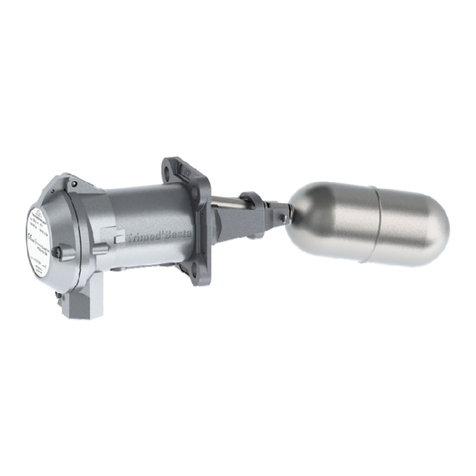www.trimodbesta.com 2 │34 LTB007X │ 2023/01
Inhaltsverzeichnis
Betriebsanleitung –Typ Z…8 DEUTSCH
1. Verwendete Symbole und Zeichen.............................................................................................................4
2. Sicherheitshinweise....................................................................................................................................4
3. Bestimmungsgemässe Verwendung..........................................................................................................4
4. Normenkonformität .....................................................................................................................................5
5. Technische Daten.......................................................................................................................................5
6. Einbau und Inbetriebnahme........................................................................................................................6
7. Wartung ......................................................................................................................................................7
8. Funktionsstörungen und Fehlerbehebung..................................................................................................8
9. Ersetzen des Schaltmoduls........................................................................................................................8
10. Brandschutz................................................................................................................................................9
11. Entsorgung..................................................................................................................................................9
12. Lagerung und Transport.............................................................................................................................9
13. EU-Konformitätserklärung ........................................................................................................................29
Anhang 1: Temperaturdiagramm –Schaltmodul Typ Z…........................................................................30
Anhang 2: Temperaturdiagramm –Schaltmodul Typ ZHT…...................................................................31
Anhang 3: Temperaturdiagramm –Schaltmodul Typ ZU….....................................................................32
Table of contents
Operating instructions –Type Z…8 ENGLISH
1. Used symbols and signs...........................................................................................................................10
2. Safety instructions ....................................................................................................................................10
3. Use in accordance with the intended purpose..........................................................................................10
4. Conformity of standards............................................................................................................................11
5. Technical data ..........................................................................................................................................11
6. Installation and initial start-up...................................................................................................................12
7. Maintenance .............................................................................................................................................13
8. Malfunctioning and Troubleshooting.........................................................................................................14
9. Replacement of the switch module...........................................................................................................14
10. Fire protection...........................................................................................................................................15
11. Disposal....................................................................................................................................................15
12. Storage & transport...................................................................................................................................15
13. EU-Declaration of Conformity...................................................................................................................29
Appendix 1: Temperature diagram –Switch module type Z….................................................................30
Appendix 2: Temperature diagram –Switch module type ZHT…............................................................31
Appendix 3: Temperature diagram –Switch module type ZU…..............................................................32
Table des matières
Mode d’emploi –Type Z…8 FRANÇAIS
1. Symboles et signes utilisés.......................................................................................................................16
2. Instructions de sécurité.............................................................................................................................16
3. Utilisation conforme à l'usage prévu.........................................................................................................16
4. Conformité aux normes ............................................................................................................................17
5. Caractéristiques techniques .....................................................................................................................17
6. Montage et mise en service......................................................................................................................18
7. Entretien....................................................................................................................................................19
8. Dysfonctionnements et dépannage..........................................................................................................20
9. Remplacement du module de commande................................................................................................21
10. Protection contre l'incendie.......................................................................................................................21
11. Élimination ................................................................................................................................................21
12. Stockage et transport................................................................................................................................22
13. Déclaration de conformité UE...................................................................................................................29
Annexe 1: Diagramme de température –Module de commande type Z…..............................................30
Annexe 2: Diagramme de température –Module de commande type ZHT….........................................31
Annexe 3: Diagramme de température –Module de commande type ZU…...........................................32




























